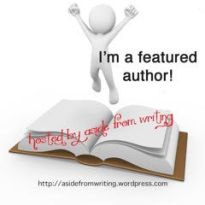
I’m a big Planner. From Legends of Windemere to Life & Times of Ichabod Brooks, I set things up before I really get started. I look at this as a first draft in a way because it helps me lock in main events and get an idea of character paths. Others do the same, but I’ve noticed that it doesn’t always look the same. The overall structure of the book can take many forms. I’m just going to mention mine and maybe others will talk about theirs in the comments. Perhaps other posts too because I don’t think people discuss their own layout style as much as their writing style.
Chapters
I do chapters, which isn’t something rare. I aim for 13-18 chapters when doing a novel, but it does depend a lot on the story itself. There have been some that come in short and fall under novels. Short story collections don’t get this treatment either, but I’ll get to that later. Using chapters allows for transitions to happen ‘off page’, mid-story suspense, and jumping between several concurrent storylines. Of course, everybody knows this, so I’m just doing an overview.
One thing I do that isn’t as common is using a Prologue. Technically, this could be Chapter 1, but I use it to set up the main story. We’re told that the main hero should be introduced in the opening pages, but that can be a problem if you want to create foreshadowing of the events he or she will face. So, the Prologue works as a buildup to the main event. You can show characters who are working behind the scenes or are meant to show up later. For example, I used the Prologues of Legends of Windemere to show what Baron Kernaghan, his agents, and the Gods were doing leading up to the events of the story. With War of Nytefall, I do the same only the characters involved tend to be more central. For these, I try to develop an aura of mystery and suspense about the overall adventure.
Chapters are fairly straightforward in my opinion, but there are the smaller divisions that can show a great variety:
Scenes
These are the sections of a chapter, but you only get them if your chapters are divided. If you aren’t adding multiple events/locations into one chapter then the overall section is the scene as well. As before, you can get suspense and transitions out of these jumps, but you have to be more careful. While a chapter can span days, a scene change tends to be more hours unless you’re skipping large chunks of a journey. It’s harder to move locations as well, but it’s doable if you want the focal scene to get a time skip. For example, I could write one scene where Clyde and Mab are planning a heist then put another scene with Chastity and Titus talking about another aspect of the story. After that, I go back to the heist as it occurs instead of showing the hours that lead up to it. In this scenario, the real difference between chapters and scenes is page length.
My personal usage of scenes varies depending on what I’m writing. Short stories are all scenes with no real chapters. A book will have the chapters divided into 2-4 scenes. I typically only do 2 for a Prologue or final chapter. Most commonly, I do 3 to create a beginning/middle/end movement for whatever event is taking place. This can still happen with 4 (or the rare 5), but I feel more comfortable with 3. That isn’t to say I try to cram things in or be vague simply to hit that number. Many times, I’ll take an outline to merge scenes that go together or divide one that seems to be jumping. This is where my structure can be fairly flexible.
So, what kind of structure do you use for writing?





Reblogged this on Chris The Story Reading Ape's Blog and commented:
Let Charles know in the comments under his original blog post 😃
LikeLike
Thanks.
LikeLiked by 1 person
Welcome 👍😃
LikeLike
I’m a bit weird in that I have the last three lines of a book thoroughly planned out and the rest works to that end. The characters usually control the direction.
LikeLiked by 1 person
Wow. That’s unique. So many questions of how that works.
LikeLiked by 1 person
I know. It does for me though.
LikeLike
I like to storyboard based upon three-act structure. This means the big turning points. Then I fill in index cards to get me between those points. I don’t go too crazy with it these days, but you can even target word counts if you like.
LikeLike
I never got into the word counting. How often do you hit those targets?
LikeLiked by 1 person
I did it one time, then abandoned the word count part. Some might really like that part, but it isn’t for me.
LikeLike
It feels too restraining for me.
LikeLiked by 1 person
I tend to write shorter chapters rather than scenes. When I’m reading my time is limited and yet I hate to stop before the end of a chapter/scene. It’s a pet peeve of mine when writers make these too long.
If I can end on a good hook, I’m happy. That way the reader is ready to turn the page 🙂
LikeLike
Interesting tactic. So you tend to have a series of short chapters? How long do they typically run?
LikeLiked by 1 person
Generally between 1200-2000 words (works out to 5-6 pages) When writing an action sequence I’ll double that, splitting the scene in two in order to show both character’s (or the antagonist’s) POV.
LikeLike
Love that POV trick.
LikeLiked by 1 person
I love a prologue and an epilogue. But I don’t always use them. I usually write chapters with two to three scenes each, depending on the number of point of view characters.
One book I wrote for kids (now out of print) involved diary entries, rather than chapters.
LikeLike
I use prologues, but I can’t get into epilogues like I did as a teenager. So, you POV hop?
LikeLiked by 1 person
Yes. Each chapter features a different POV.
LikeLike
If I switch POV within a chapter but it’s the same characters I do a scene break. If I switch location without seeing how the character(s) got there I do a scene break if it is closely connected to what went before. If it isn’t connected I start a new chapter. If it’s a space of time (say longer than an hour) or the next day/week etc I usually start a new chapter. If it’s different characters (usually the antagonist(s) ) I start a new chapter. My chapters can be half a page or 12 pages, or longer if that is what is called for. Some chapters will have several scene breaks others none.
It all depends on how the story unfolds. I think we get a feel for what works as we go along. On early drafts I’ll put the date and time each scene occurs above the text if the story needs to follow a chronological order and remove the time heading later.
LikeLiked by 1 person
That sounds like a detailed system. I love the addition of date and time in the early drafts. Do the chapters/scenes stay the same throughout all the editing?
LikeLike
Do you mean do they change position? Sometimes – if I think the action needs to have happened sooner or later. And of course they could get cut entirely, or briefly referred to in a reflective comment if it means a piece of information is otherwise missing. I don’t put chapter headings in until I feel I’ve got the order of action right.
LikeLike
I usually do chapter numbers instead of titles. Ever merge two sections? I do that with my outlines at times.
LikeLike
Sorry – meant chapter headings as in: Chapter 1, Chapter 2 etc. Can’t stand chapter ‘titles’
as in giving some clue of what is to come – don’t mind if it’s a heading about change of place if action switches back and forth between locations, or time headings if crucial to the story.
LikeLike
I use amusing titles for one of my stories. It’s just something I do on my blog now. Seems to work if the mood is humorous, but that’s just me.
LikeLike
Thanks for this helpful information, Charles. It’s always good to have guidance and compare it to what we do ourselves. We can always learn from others. 🙂 — Suzanne
LikeLike
Glad the post helped.
LikeLike
I’m one of those fools who does moderate world-building and enough character development to get a sense for the story, and then I… start. I keep notes and sketches in a spiral notebook, so I don’t lose track of details, but basically I trust myself to follow the story and come up with interesting stuff along the way. This means sometimes I dither a bit over what happens next, and sometimes I even print a page or two, then delete them and get back on track.
Stories are magical. You knew that, right?
LikeLike
Reblogged this on Loleta Abi.
LikeLike
Thanks for the share. 🙂
LikeLiked by 1 person
You’re welcome, Charles!
LikeLike
Pingback: Pieces of a Book: Chapters and Scenes – Where Genres Collide
In my Wolves of Vimar fantasy series, I have a prologue. In Book 1, The Wolf Pack, it deals with historical events that it is necessary to know to make sense of the rest of the story. In the other books, it does not deal with historical events, but with things not in the main story, but that give some information needed to help understand what’s going on. It often involves minor characters.
Several of my chapters in my historical novels are composed of several scenes, where the POV and/or place changes, but are still relevant to each other.
LikeLike
That’s what I do with my prologues. They help with a clear set up for the story instead of diving right into the action. POV changes are tough especially in the same chapter. Yet it’s a challenge I enjoy since it helps draw out all the characters.
LikeLike